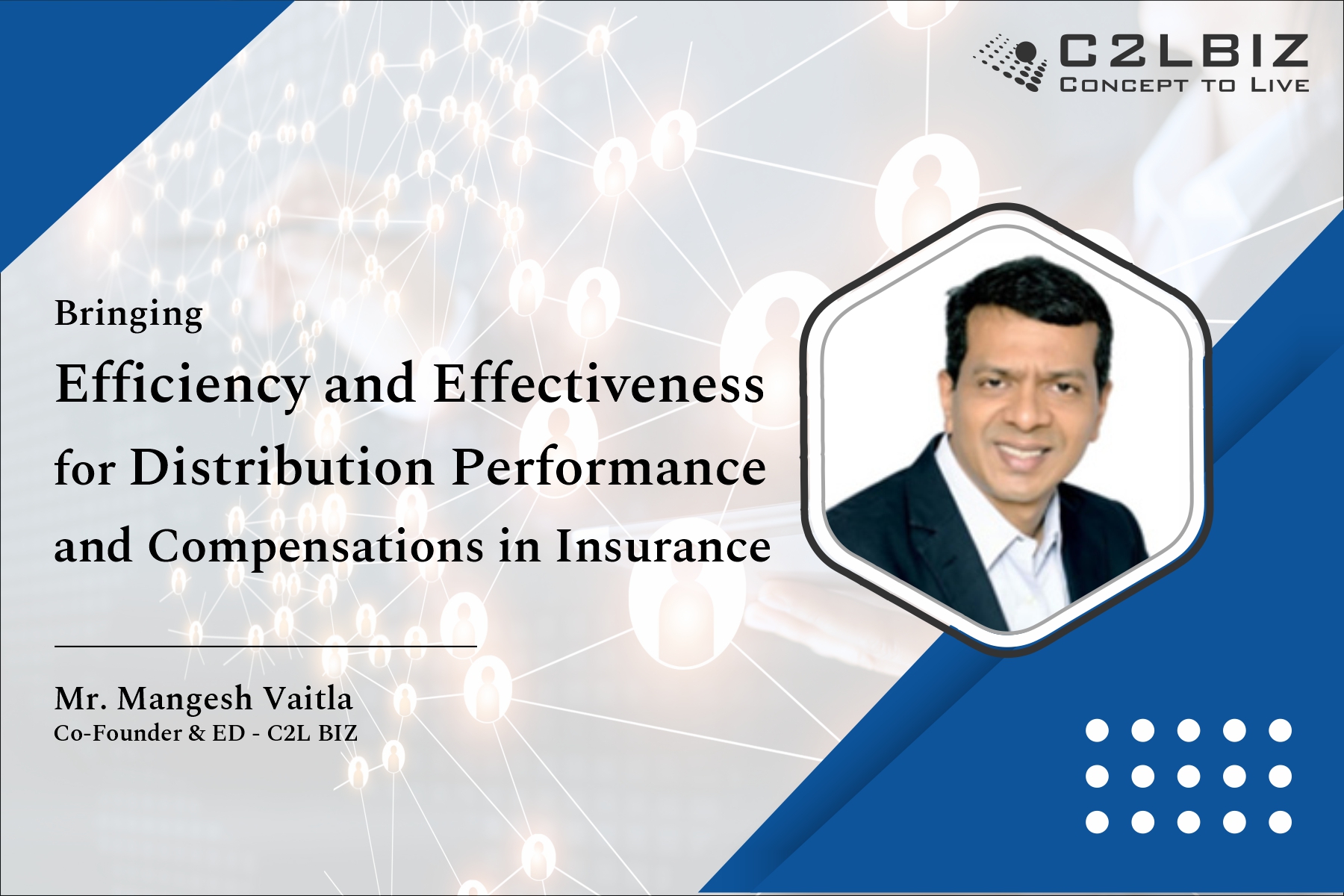Multiple key challenges are driving the insurers to seek a more effective distribution administration and some are even scaling it higher to make the compensations tools strategic as they realize the significance of its effect on the performance and alignment to business goals.
One insurer lately spent a huge amount of money creating the virtual office for its distribution team, but has been since grappling with reconciliations of the data which were hitherto handled with end of day extracts. The policy issuance/ premium records and add on scripts written in data / analytic tools were grappling with multiple errors on the computed payouts. What seemed to have been overlooked has been the dynamism in the movements of the agents which has led to queries and manual corrections.
Another Asian insurer, when it ventured into a new bank partnerships agreed for diverse KPI’s to incentivize its bank advisors landed with multiple separate compensation files and systems providing the payout files at different times, Significant challenges were noted especially in managing claw back due to transaction reversals. This added to significant concerns for the finance head managing reconciliations especially during the end of the month/ quarter/ year end too.
One insurer which had launched its omnichannel digital capabilities faced severe challenges in managing joint solicitation of business across the lead owner, lead generator and the sales advisor who completed the sale. Managing such new age digital partnerships demands abilities to address such omnichannel needs, track and reward such sales appropriately.
Distribution whether through conventional channels, digital or even hybrid models all needs effective performance management. Conventionally most policy administration or their underlying systems were heavily focused on the policy or recently at best on the customer. But in the process the needs and the significance of the distributor, agent, advisors, partners, were ignored and were slipped outside the core systems. Even those who addressed the same did so in a very siloed manner and did not address the market needs realistically.
Thus, key areas have been driving the insurers to seek better distribution performance and compensation management capabilities.
- Multiple Channel Types and growing
– Tied Agency, Banca, Brokers, IFA’s, Alternate Partnerships (Retail, Telecom, POS), Aggregators, ALC’s, Variable Agency / Insurance Manager models - Dynamism of the channels and relative movements of its constituents in the backdrop of the long-term nature of the policy
- Limitations of the core admin platforms to handle the distribution needs holistically has led to emergence of siloed systems and data outside structured systems
- Historical challenges – All the above have led to most sales team handling the above needs through excels and non-auditable systems and processes
- With growing regulatory vigilance due to need for more effective customer protection practices, the distribution compensations and transparency of the same is one of the top priorities for most insurers
Any successful distribution system implementation throws various challenges in the project life cycle. It would be important for insurer to understand the critical success factors and ensure adequate attention in planning for the same.
- Solution Design for Helping Adaptability to Business Dynamism
This is very important as any compromise on the same will impact the capability to incorporate new channel types, new age distribution model, or even hybridization capabilities as emerged in the omnichannel needs. Uniquely we recollect even some complex needs like omnichannel capabilities for joint solicitations, holistic Balance Score Card (BSC) model to compensations or very tightly performance linked salaries for attracting new age millennials were a few cases in point which invalidated many conventional distribution systems that did not had appropriate architecture to adapt to new age needs.
- Integrability to snuggly fit in the insurers systems and emerging digital ecosystem
This is a universal capability for all new age systems as no one system will be able to do all functions universally and will have to learn to co-exists with other allied systems. Additionally, beyond functionality with the endeavour to minimize data capture and leverage existing third party services / / InsurTech providers the said capability is of utmost important. The third most important factor here is standardization, but the said norms will emerge from diverse ecosystem players and till then it may be necessary to provision interim hooks which may refine as the ecosystem refines and sets its own standards.
- Ensuring success of the historical data migration
Like in any Life Insurance policy administration migration project, historical migration of the distribution/ policy records too is very critical for the success of the project. Many compensations are linked to longer time periods and not merely to the newly sold policy records e.g. renewal commissions, quarterly/ annual bonuses, incentives linked to targets, incentives linked to persistency quality, and in some matured markets like japan the same may also depend on assessment rankings which may keep changing based on the correctness of emerging and historical data. Many projects have been considered failures purely because they were unable to eliminate the older system completely. Thus, increasing to the total costs of ownership of the insurer, rather than reducing the same.
- Time to Market – Both for Implementation and also Future Ongoing changes.
For many insurers the strategic objective of the project is to help reduce the business resilience for the insurer to adapt to new channels, compensation models in a much faster and sustainable manner. It has been noted that the same has been severely impacted due to limited configurability to define all types if hierarchy structures and levels, or limitations in ability to include diverse types of KPI’s within the computation needs of the compensations. Some insurers even grappled with the payout rules they had already committed to their channels. All these expectations of insurers are realistic from any distribution compensation system and have to be met not only at time of the system implementation but very quickly even on recurring basis.
- Track Record to Assure Success
Specializations in each field is very critical to ensure success and many insurers have struggled its the said project. Companies with well established track record have matured practices for requirements/ gap study, integration, migrations and many other areas to ensure that the minimum standard of their delivery and risks are significantly mitigated.
While the above success factor are the core elements that needs to be ensured in any distribution performance and compensation project one needs to also understand and plan for the typical risks that emerge in such projects. Mitigations proactively with or vendor capabilities to address will be very important to ensure project risks are well managed.
| Risk Type | Key Reason | Areas of Risk Mitigation |
| Requirements Risk | Errors in understanding | • Insurance Distribution Domain Knowledge
• Experience of building innovative, configurable Distribution systems, • Consultants trained to dig out the exceptions Good experience in successful implementations |
| Risk of Business Changes | Delay due to evolving requirements changes | • Configurability in areas Hierarchy, Movements, Production, Compensations, Payments, Integrations, Batch Management, etc.
• Adaptability of Workflow and Rule Engines • Are customization/ enhancements completely coded Change Management process |
| Integration Risks | Risks due to wrong integration | • Integration experience with diverse Policy Admin, Distribution Admin, Portals, Payment gateways, Mail/ Messaging Gateways, General Ledgers, and many other peripheral systems
Aligning the handshakes (Services/ API’s/ Files), frequencies ( real-time, defined schedule) , data transformations, methodologies across said systems/ vendors to automate the same. |
| Migration Risk | Risk of migrating historical data from existing systems | • Ready Migration methodology, layer and scripts
• Baseline best practices evolved, if any • Experience – successfully migrating distribution and Policy Admin System. Experienced Insurance distribution migration consultants |
In life insurance distribution we all know by now that while digital channels are growing fast the in person / face to face channels will remain for a long time due to the advisory needs that the customers expect from said channels. It is undoubtedly clear that the advisors capabilities can be well supplemented with new age mobility, ai and analytical tools the need for the nudge to close a sale may not always be effective only with digital channels. Till then as insurers learn to balance the ecosystems of channels more effectively the performance management engine and related compensations will be core to insurers distribution strategy and above insights help insurers to make more effective decision making for the service/ solutions of their choice.





